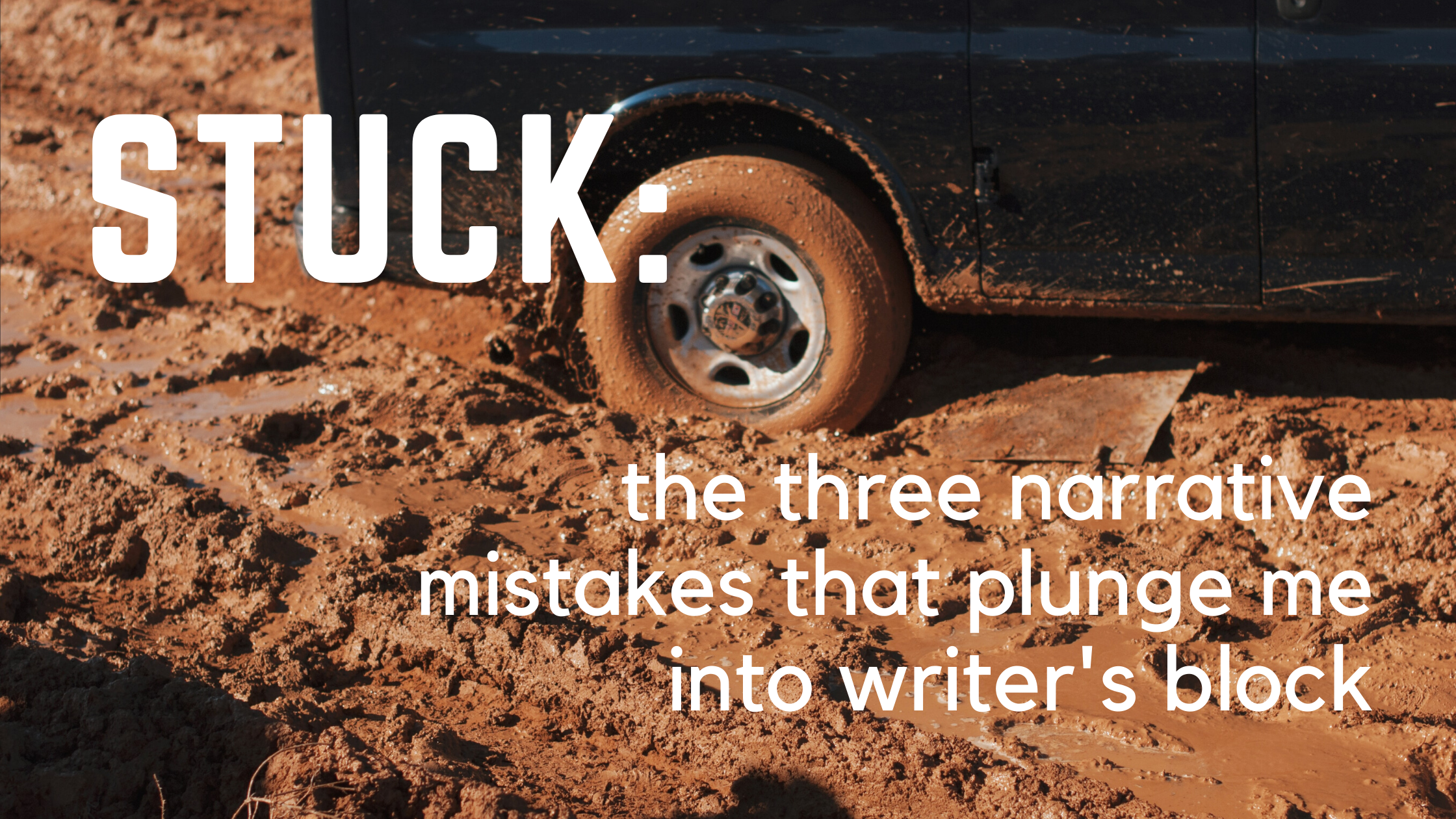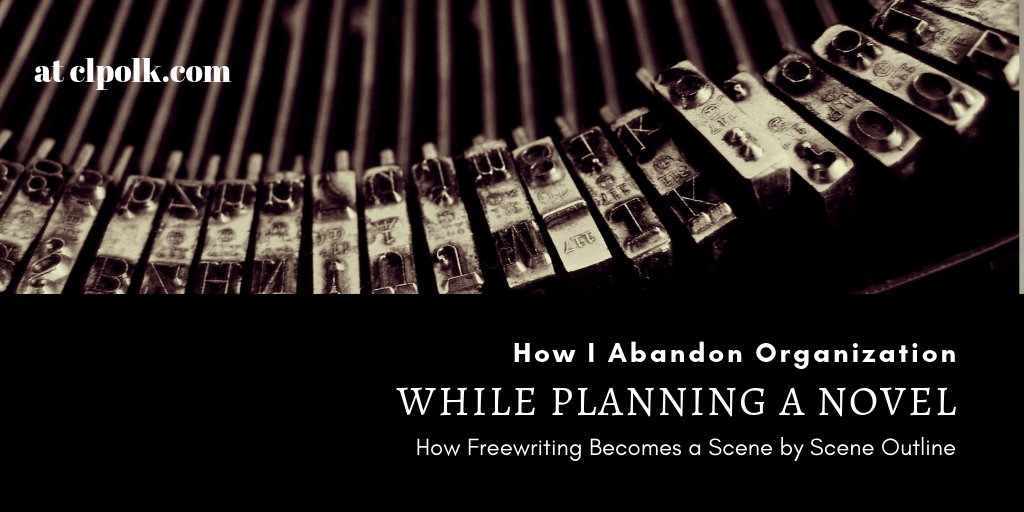
Scene Outline? What’s That?
Some people outline books with a sentence describing the summary of each chapter. That’s super cool, and my first outline draft/summary is usually about three pages of me breathlessly explaining the story at top level, with the occasional “this is cool!” scene detail. But when i’m sitting down to actually draft the story, I outline the scene i’m writing that day in detail.
Dude, that’s a lot of work.
It is! And it may not work for you. I need to do it this way. If I don’t, I wind up writing scenes that feel aimless, however pretty they might be, and my characters have mellow conversations where they have a good time, but the reader’s probably bored stiff, or I write a fantastic spectacle that doesn’t really advance the story or worse–somebody starts explaining everything.
Or worse, I wander around for three days whining because I don’t know what happens in the next scene, some crucial detail that’s escaping me, and until I know what it is, I can’t write the scene.
You’re right. That is nonsense. The trouble is I fall for that nonsense all the time. I really will sit there and agonize because I don’t know what to do. When I outline the scene, I’m tricking myself into getting out of the circumlocution and examining a tiny piece of the scene at a time, getting it down so I can’t forget or change my mind or find another excuse not to write.
Okay. How does it work?
It goes like this. I open up a comment in google docs/word or a notepad window or I use my Super Fancy Custom Metadata on Scrivener, and I fill in answers for each of these entries:
POVC
Who has POV for this scene? If more than one person in the scene has POV rights, I choose to tell the scene from the perspective of the person
- who has the most at stake,
- who has to make a decision that will propel the story forward,
- Who is more likely to remember this moment when they look back on it in ten years.
So if Alphonse’s stake in the scene is whether he gets to go to his favorite restaurant, and Jimmy’s stake in the scene is whether he can convince Alphonse to go to the new place uptown so he can get a secret glimpse of the woman he thinks is his long-lost niece, we probably want to go with Jimmy’s POV.
Setting Location
Where is this scene taking place? Jimmy and Alphonse could be at home. Or they could be downtown, where Jimmy just finished negotiating a contract that’s going to make his client a lot of money. Or they could be stuck in rush hour traffic, idling in a left turn lane for the second red light in a row. Or they could be exhausted from an afternoon of crowds and nerds at a comic book convention. I decide specifically where, and I work out scene location details using the 5 4 3 2 1 exercise.
Scene Action
What are Jimmy and Alphonse doing in the scene? The setting informs this action. If they’re at home, they could be doing yardwork, changing clothes/doing laundry, sorting mail, assembling IKEA furniture, cleaning up a domestic disaster like a burst pipe or a window left open during a rainstorm. Scene action is a great way to insert a little symbolism, if you’re into that. But get them doing something, whenever possible. It adds energy and vividness to the scene.
POV character’s Goal
What does your POV character want? I talked about this a little bit when I was discussing POV, when I talked about who has the most at stake in the scene, and in this case, it’s Jimmy, who wants to persuade Alphonse to go to a new restaurant for dinner, so he can scope out his Super Secret Niece.
Here’s something that I always try to do when I’m working out a scene goal: I make sure there’s a nice active (transitive) verb in the sentence. Character wants to VERB (character, object, situation.) Active verbs! They’re not just for the work experience portion of your resume!
I have a book. It’s for actors, but I think it’s a great resource for writers. It’s called Actions: The Actor’s Thesaurus. If you have trouble finding nice crunchy verbs, here’s an entire book of them. It’s worth getting in print just for flipping through as a kind of writer’s prompt generator-open to a random page with your eyes closed, stab your finger on that page, write a character Subduing or Charming or Resisting or Emulating in order to get what they want.
POVC’s Motivation
All right. Jimmy wants to go to the restaurant. Why? To see a woman there who might be his niece. Why? Because if she IS his niece, then his 85 year old grandmother will forgive his side of the family, or at least him in specific. Why? Because he found her favorite grandchild, and grandma will be grateful enough to help him financially.
You can and should say why until you get to the root of what your character needs, and what getting it will mean to them. It should be connected to your POV character’s story goal, and appropriate for where they are in the story arc. This feels like an Act I kind of scene to me, so I’m at the early, unenlightened end of the story arc.
POVC’s Emotion
How does Jimmy feel at the start of the scene? Let’s say in the previous scene, Jimmy caught a glimpse of the woman he believes to be his niece on the commute home. He eavesdropped on her conversation, and her voice is right, and she’s going to a specific restaurant that night as a “going away party” but he doesn’t know if she’s going away for a week or forever.
How does he feel? Curious, as many people would be. Excited? Perhaps. Resentful?
Oh my, look at that. Resentful. What a delicious contrasting emotion. Let’s keep it. The gears are turning now, thinking about how mixed up, juxtaposed, and conflicted that jumble of emotions is. Why Resentful?
Complications and Conflict
A scene is a unit of dramatic action. Emphasis on drama. We’ve got a clear goal, interesting motivation, intriguing emotions snaking around underneath–and what a waste all that thinking would be if the conversation went like this:
“Alphonse, sweetie, how about we go to this new restaurant uptown? It’s called Farm, and they only serve food grown or raised within 100 miles.”
“That sounds great, honey. Do I need a tie?”
It’s like Sol Stein said in How to Grow a Novel: “The engine of fiction is somebody wanting something and going out to get it. And if you let him get it right away, you’re killing the story.”
So we need a conflict, and the conflict logically, inevitably comes from Alphonse – if it were a conflict at the restaurant, then the scene setting would be at the restaurant, not at Jimmy and Alphonse’s bungalow while they pull weeds out of the flowerbed or paint a wall or wash dishes or whatever it is they’re doing. If Alphonse is keen to go someplace new, then scrap all this and jump ahead to the part where Jimmy actually has a problem, because what you’re working on isn’t a scene.
So what’s Alphonse’s job in the scene? Alphonse’s job is to have a conflicting goal. He doesn’t want to go to some hipster restaurant called Farm. And he has a reason why he doesn’t. And he feels just as strongly about it as Jimmy does about wanting to get another look at this woman who could be the key to him getting what he needs to achieve his big story goal.
So Jimmy floats the idea–and Alphonse’s reaction is no. Why? He’s tired and doesn’t want to drive, find parking, pay for parking, stand in line, and then pay 28 dollars for an organic grass fed pasture raised hamburger in a restaurant that has a DJ. He wants to put on Birkenstocks and walk to the place on the corner, maybe have one too many beers, and go home to catch a little Netflix. Or he’s already made arrangements to meet some of their friends. Or maybe he has a headache. Or maybe he’s frustrated with Jimmy’s spendthrift ways, and going out to a cool restaurant when they need to pay overdue taxes is exactly the problem with their relationship.
POVC’s emotional shift – what’s at stake if they fail?
So Alphonse says no. What does that mean for Jimmy? It means he will lose his lead on the mystery woman, and so he won’t be able to reunite her with Grandma, so he won’t get on her good side, so he can’t ask her for help with his business, so he’ll be even more at risk at losing it–and maybe the house too, and won’t Alphonse love that? He must go to Farm so he can casually walk by, stop, do a double take, and say, “Nicole?” in exactly the right tone of voice, and that’s worth a 28 dollar hamburger. Hell, it’s worth two 28 dollar hamburgers!
So Jimmy’s desperate. He’s anxious. He’s frustrated, because everything is riding on this moment. He needs to go to Farm and find that woman.
POVC’s response to the Complication
So based on Jimmy’s goals, his motivation, his feelings, and the stakes, what does he do? Does he convince Alphonse with emotional manipulation? Does he pick a fight so he can slam out of the house and go alone? Does he negotiate a deal – come with him tonight, and they can do something Alphonse really wants to do but Jimmy isn’t really enthused about?
Result
By hook or by crook, Jimmy’s going to Farm. He could be leaving a big emotional mess behind as he jumps into his Prius, or he could have a resentful emotionally manipulated Alphonse with him, or maybe Alphonse is riding shotgun, gleefully organizing a weekend of hiking and camping in the nearby national park–with his family. But whatever it took, Jimmy’s in the car and driving toward the next scene.
Dude. Holy crap.
I know. I went into a huge amount of detail, explaining how I go to each piece of a scene arc. When I’m doing this for real, I tend to just write a brief sentence for each. If I’m having a strong vision of how the scene looks, I’ll note down the important parts, or even write a bit of dialogue that’s resonating. In reality, sketching out the details of a scene outline takes only a few minutes, like laying down the basic shapes of a drawing. It’s also handy if I have a vision for a future scene, but I’m not at that point in drafting – I fill out the scene outline, and then I’ll know what I originally intended once I finally get to that point in the story.
It’s been a long time since I published a craft blog post, but I haven’t quit talking about craft. I made a Patreon account, and I have posts there about things like
- a synopsis writing guide that will help expose structural manuscript problems
- how to evaluate a scene to make sure it’s doing the right things
- how to build a story when all you have is a character
I do a new writing related post every month, available to patrons on a sliding scale basis – pick the level of patronage you can afford and you’re in!
Starting in August I am starting a Live Sessions tier, where I will explore a subject about the craft and business of writing on zoom, where you can ask more questions. Look for it then!





